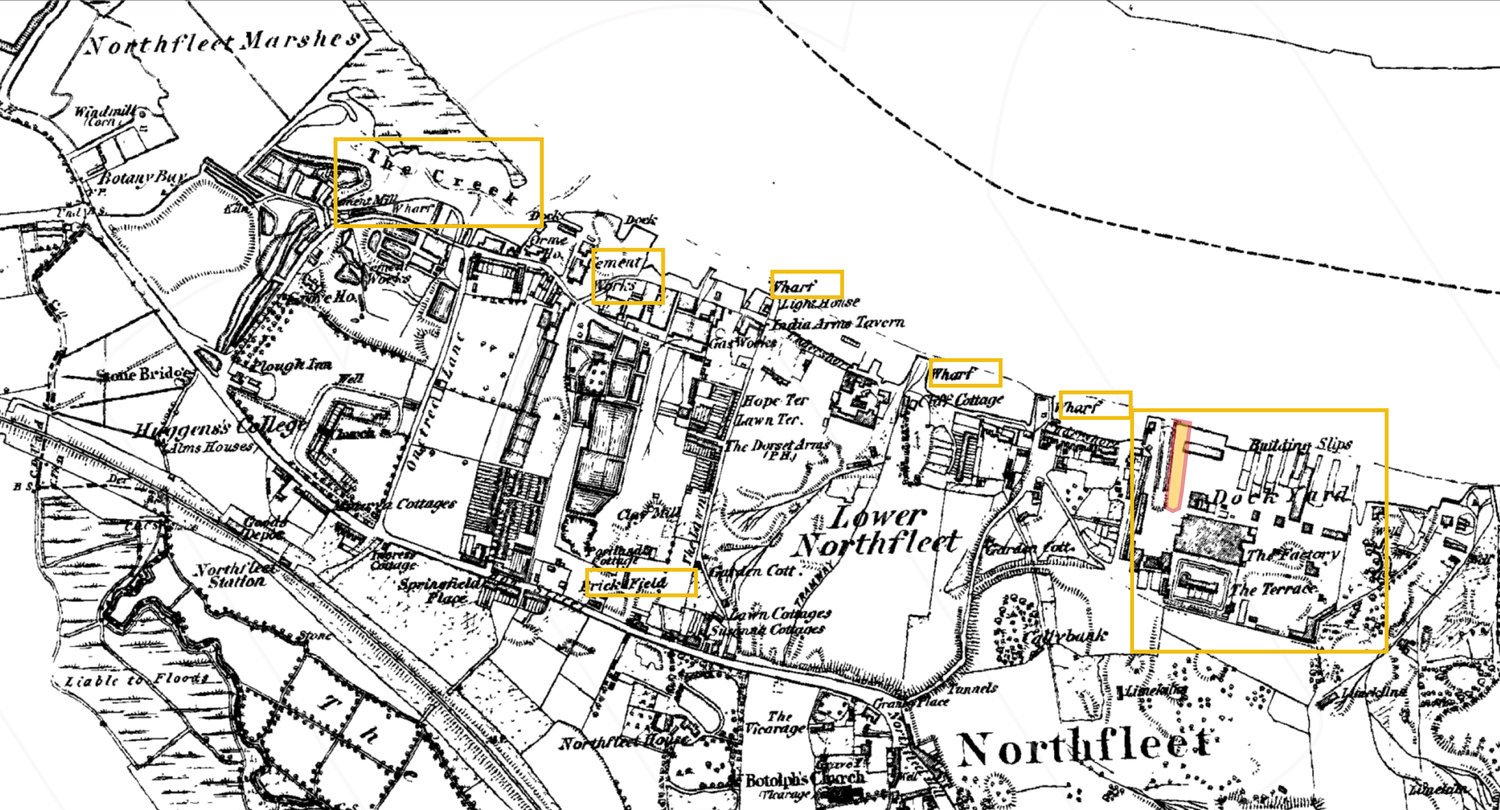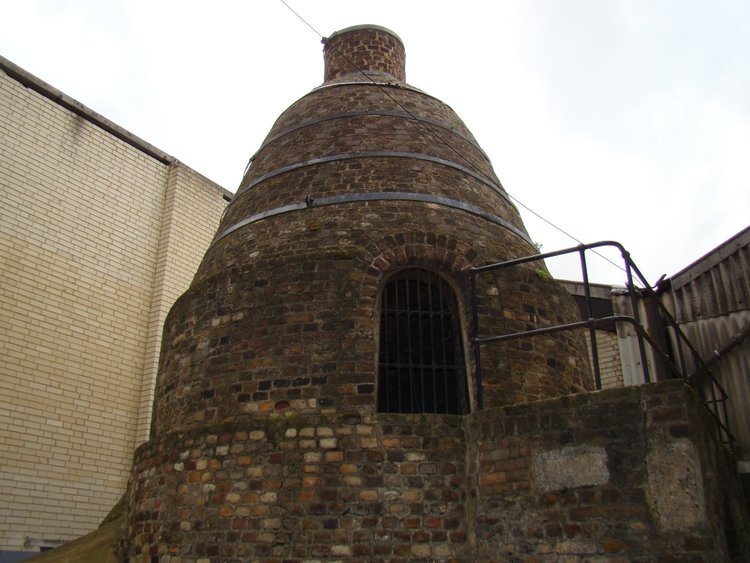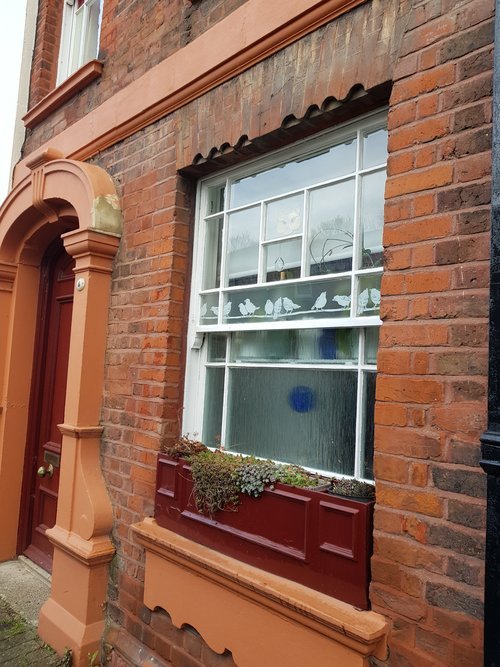
Learning from the River and Industry
Within Ebbsfleet’s historic environment there is evidence of innovation, successful adaptation and industry. The Thames Gateway saw a series of firsts: the first industrial paper making; the world’s first long-distance electric power station; the first dock railway; the unloading of the UK’s first oil shipments and the first reliable cement production. This industrial legacy is embedded throughout Ebbsfleet’s landscapes.
Click on local industry to find out more >
Chalk & Cement Works
The chalk has been extracted over centuries to make lime for cement production creating a dramatic and distinctive land-form.
Marl Pit by Thomas Hennell (1903-1946) a local artist of national importance born in Ridley Kent © Courtesy Chris Beetles Gallery
In 1868 Swans combe was still a predominantly rural community with many acres producing hops. Several oast houses were located in the Swanscombe Street and Milton Street areas. However, Swanscombe Manor, which consisted of the land to the south of Swanscombe Street (including the woods), with much land to the east and north of the villages, was sold to Thomas Bevan, one of the cement magnates. This sale signalled the demise of much of the arable land and woodland, and would, over the next century, be largely excavated for chalk and clay. Swanscombe became surrounded by large chalk pits and chalk escarpments creating a strong and dramatic edge to the existing settlement.
Eastern Quarries 1960
© Crown copyright and Landmark
Juxtaposition industry and chalk quarries Northfleet.
Shoreham cement works
Northfleet industry
Shoreham cement works
Shoreham cement works
Gravel grader and batching plant machinery
Northfleet trade & industry
Wharves, Warehouses & Kilns
The River Thames developed historically as a major communications corridor. In Roman times, Northfleet was the trading connection on the Thames and the Fleet river was used to connect Watling Street to the Thames.
In 1796 when James Parker set up kilns along Northfleet creek to make his ‘Roman’ cement, it marked the beginning of the large cement works industry which developed along this stretch of the river.
1860 map of Ebbsfleet River
©Crown copyright and Landmark Information Group Limited 2018. All rights reserved.
The Bevan Portland Cement Works, Northfleet, 1939 - Britain From Above.
The Creek Northfleet - saw tooth roof forms, warehouses and chimneys.
Dockyards, Wharves, Kilns, Brick Fields and ‘Chalk Hills’
© Crown copyright and Landmark Information Group Limited 2018. All rights reserved.
The map of 1860 (above) shows a hive of industry: cement works, wharfs, a brick field and ship building slips at the dockyard.
‘... we comes to Gravesend, the whole shore being low, and spread with marshes and unhealthy grounds, except with small intervals, where the land bends onwards as at Erith, Greenwich, North-Fleet, etc in which places the chalk hills come close to the river, and from thence to the city of London, and adjacent countries, and even Holland and Flanders, are supplied with lime, for their building, or chalk to make lime, and for other uses...’ Daniel Defoe A Tour Through the Whole Island of Great Britain - 1724-6
The drama and industry of the ‘chalk hills’ defined the character of Northfleet as early as the Eighteenth Century. Similarly it is interesting to note the strong trading links with the low countries through the manufacturing of lime.
Lime kilns at Northfleet
Northfleet Dockyard
Launch of the Orinoco, West India Mail Steamer at Northfleet Dockyard, Kent, England, UK, 1851 Engraving.
Bottle kiln - oldest cement kiln in world.
Greenhithe
Greenhithe High Street is an inflected, meandering road located parallel to the river front with strong connections to the Thames. The buildings creating the street frontage are not in a formal alignment thereby adding townscape interest to the street.
A riverside hamlet from the Twelfth Century; Greenhithe’s waterfront wharves were used for shipping corn, wood and other commodities, however its largest cargoes were chalk and lime.
The High Street has evolved over the centuries and is now characterised by buildings from different periods. The use of colour deployed through stucco, brick, flint and stones helps to create a strong identity for this riverside location. Similarly the attention to detail around the windows (variations on a theme), doorways and dormers, brings a coherence to the character of Greenhithe.
Colour, symmetry & window proportions - a townscape marker at the termination of the High Street. The eastern end of the street is marked by the strategic location of a tall birch tree.
Window detailing provides decoration and visual interest, helping to distinguish individual houses from each other.
Windows with highlighted borders are common, and the cut brick lintel again appears as a repeating motif.
Flint is a common building material found across the area, used in both buildings and boundary walls. Here it has been used to face houses.





















